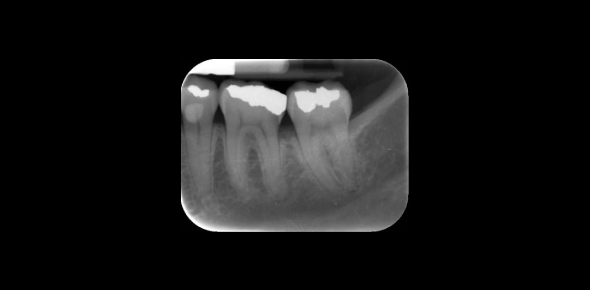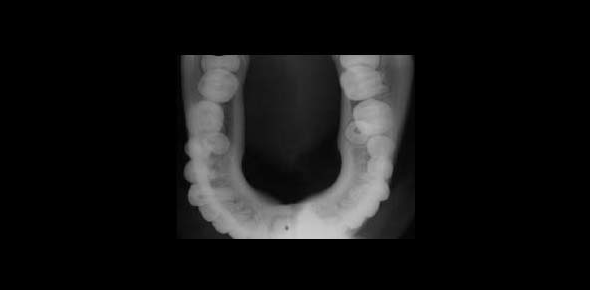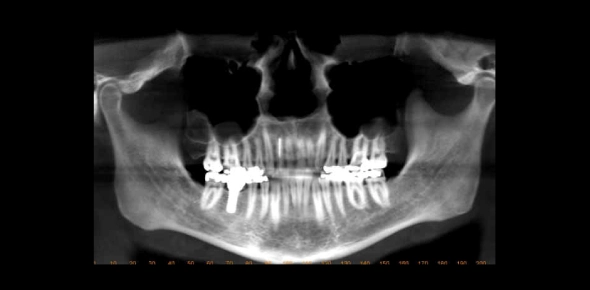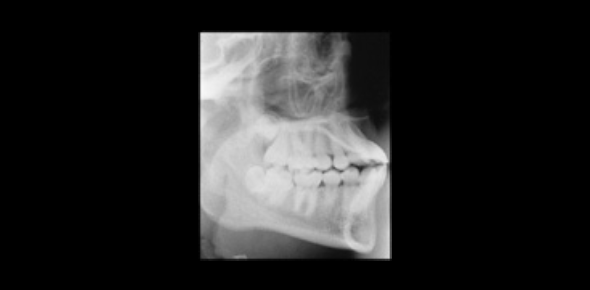Dental Radiology Practice Test: Quiz With Questions & Answers
(385).webp)
The Dental Radiology Practice Test is designed to assess your knowledge and understanding of dental radiology concepts. If you are preparing for an exam or just looking to refresh your knowledge, this quiz will help you test your grasp of the essential topics in the field. You will encounter questions on various radiographic techniques, safety protocols, image interpretation, and the anatomy relevant to dental radiology.
This quiz serves as an excellent tool for reinforcing theoretical knowledge, ensuring that you are well-prepared for exams. Dental radiology is a critical component of modern dentistry, and understanding it thoroughly is essential for Read moreeffective patient care. Take this dental radiology quiz to solidify your expertise in this field and gain confidence in your ability to work with dental imaging equipment.
Dental Radiology Practice Test Questions and Answers
- 1.
An example of particulate radiation is:
- A.
Gamma rays
- B.
X-rays
- C.
Cathode rays
- D.
All of the above
Correct Answer
C. Cathode raysExplanation
Cathode rays are an example of particulate radiation because they consist of streams of high-speed electrons that are emitted from the cathode in a vacuum tube. These electrons have mass and charge, making them particles. In contrast, gamma rays and x-rays are forms of electromagnetic radiation, which do not consist of particles but rather are composed of photons. Therefore, cathode rays are the only option among the given choices that represents particulate radiation.Rate this question:
-
- 2.
Name the following intraoral radiograph:
- A.
Periapical radiograph
- B.
Bitewing radiograph
- C.
Occlusal radiograph
- D.
Biteblock radiograph
- E.
Pericoronal radiograph
Correct Answer
A. Periapical radiographExplanation
The given radiograph is named a periapical radiograph. This type of intraoral radiograph captures the entire tooth, from the crown to the root tip, as well as the surrounding bone and tissues. It is commonly used to diagnose and assess conditions such as dental caries, periodontal disease, and periapical infections. The periapical radiograph provides a detailed view of the tooth's root structure and the surrounding bone, aiding in the identification of any abnormalities or pathology.Rate this question:
-
- 3.
The cathode and anode are parts of an X-ray tube. The anode is negatively charged. Which statement is correct?
- A.
The first statement is correct. The second statement is wrong
- B.
The first statement is wrong. The second statement is correct
- C.
Both statements are correct.
- D.
Both statements are wrong.
Correct Answer
A. The first statement is correct. The second statement is wrongExplanation
The cathode and anode are indeed parts of an x-ray tube, which makes the first statement correct. However, the anode is positively charged, not negatively charged, making the second statement incorrect.Rate this question:
-
- 4.
One of the following types of radiation has high Linear Energy Transfer (LET) and hence the potential for more radiation-related tissue damage:
- A.
Gamma rays
- B.
X-rays
- C.
Alpha rays
- D.
Microwaves
- E.
U-V radiation
Correct Answer
C. Alpha raysExplanation
Alpha rays have high Linear Energy Transfer (LET) and, therefore, have the potential for more radiation-related tissue damage. LET is a measure of the rate at which energy is deposited in tissue per unit length of the particle's track. Alpha particles are relatively large and heavy compared to gamma rays and X-rays, and they carry a positive charge. This characteristic makes alpha particles more effective in causing ionization and producing damage to biological tissues. Gamma rays, X-rays, microwaves, and ultraviolet (U-V) radiation generally have lower LET and are less damaging to biological tissues.Rate this question:
-
- 5.
Identify the intraoral radiograph shown:
- A.
Periapical radiograph
- B.
Bitewing radiograph
- C.
Maxillary midline occlusal radiograph
- D.
Mandibular floor of the mouth occlusal
- E.
Lateral cephalometric radiograph
Correct Answer
D. Mandibular floor of the mouth occlusalExplanation
The correct answer is mandibular floor of the mouth occlusal. This type of radiograph is taken to assess the mandibular arch and the floor of the mouth. It provides a clear view of the mandibular teeth, their roots, and the surrounding structures. The radiograph is taken by placing the film or sensor on the floor of the mouth and having the patient bite down gently. This allows for a comprehensive evaluation of the mandibular area and is commonly used in dental examinations and treatment planning.Rate this question:
-
- 6.
The radiograph shown here is a:
- A.
Panoramic radiograph
- B.
Occlusal radiograph
- C.
Lateral oblique radiograph
- D.
P-A view of the skull
- E.
A-P view of the skull
Correct Answer
A. Panoramic radiographExplanation
The radiograph shown here is a panoramic radiograph. This can be determined by examining the image, which shows a wide view of the entire upper and lower jaws, including the teeth and surrounding structures. A panoramic radiograph is commonly used in dentistry to capture a comprehensive image of the oral and maxillofacial region. It provides valuable information about the teeth, jawbones, sinuses, and temporomandibular joints.Rate this question:
-
- 7.
In the construction of an X-ray tube, the function of a step-down transformer is to
- A.
Convert the line current of 110 volts (110 volts is power) to less than 10 million amperes
- B.
Convert the line current of 110 volts to less than 10 volts
- C.
Convert the line current of 220 volts to less than 10 volts
- D.
Convert the line current of 110 volts to less than 100 amperes
Correct Answer
A. Convert the line current of 110 volts (110 volts is power) to less than 10 million amperesExplanation
The function of a step-down transformer in an X-ray tube is to reduce the line current of 110 volts to less than 10 million amperes. This transformation is crucial as handling such high currents directly would be impractical and hazardous. By decreasing the current while increasing the voltage, the transformer ensures the safe and efficient operation of the X-ray tube for medical imaging purposes.Rate this question:
-
- 8.
In the radiographic principle, "SLOB rule, "the same side movement of the object is ______, and the opposite side movement of the object is ______. What are the missing words in the same sequence?
- A.
Lateral and buccal
- B.
Lingual and buccal
- C.
Lingual and both sides
- D.
Lateral and both sides
Correct Answer
B. Lingual and buccalExplanation
The SLOB rule in radiographic principles states that when the object moves in the same direction as the x-ray tube, it appears to move in a lingual direction on the radiograph. Conversely, when the object moves in the opposite direction of the x-ray tube, it appears to move in a buccal direction on the radiograph. Therefore, the missing words in the same sequence are "lingual" and "buccal."Rate this question:
-
- 9.
How many volts are equal to 70 kilovolts?
- A.
70,000 volts
- B.
700,000 volts
- C.
70,000,000 volts
- D.
7,000 volts
- E.
700 volts
Correct Answer
A. 70,000 voltsExplanation
1 kilovolt (kV) equals 1,000 volts. Since 70 kV is given, we multiply 70 by 1,000, which equals 70,000 volts. This conversion is essential in electrical engineering and radiology, where high-voltage applications are common. Understanding these conversions helps professionals in medical imaging, power transmission, and various technical fields. X-ray machines, for example, operate at kilovolt levels, requiring precise voltage calculations. Incorrect calculations could lead to equipment malfunctions or incorrect exposure levels in imaging. Therefore, knowing that 70 kV is equivalent to 70,000 volts is fundamental in fields requiring high-voltage knowledge.Rate this question:
-
- 10.
What does the "rotating anode" design in an X-ray tube limit?
- A.
Lighting at anode
- B.
Heat production at anode
- C.
Electron production at cathode
- D.
Speed of electrons from cathode to anode
- E.
X-rays that are produced at the anode
Correct Answer
B. Heat production at anodeExplanation
The rotating anode in an X-ray tube helps distribute heat over a larger surface area, preventing localized overheating. Since X-ray production generates significant heat, excessive heat could damage the anode and shorten the tube's lifespan. By rotating, the anode spreads thermal energy more evenly, reducing wear and improving efficiency. This design allows higher exposure settings while maintaining image quality. Without a rotating anode, heat buildup could cause melting or cracks in the anode, leading to equipment failure. This mechanism is crucial for diagnostic radiology, where consistent X-ray production is necessary for high-quality imaging.Rate this question:
-
- 11.
Which type of rays are an example of electromagnetic radiation?
- A.
Alpha rays
- B.
Beta rays
- C.
Cathode rays
- D.
Gamma rays
- E.
None of the above
Correct Answer
D. Gamma raysExplanation
Gamma rays are a form of electromagnetic radiation consisting of high-energy photons emitted during nuclear reactions or radioactive decay. Unlike alpha and beta rays, which consist of particles with mass and charge, gamma rays have no mass or charge. They have the shortest wavelength and highest frequency in the electromagnetic spectrum, making them highly penetrating. Due to their strong ionizing ability, gamma rays are widely used in cancer treatment, sterilization, and medical imaging. In contrast, alpha and beta rays are forms of particle radiation, and cathode rays consist of electrons, making them fundamentally different from gamma rays.Rate this question:
-
- 12.
What primarily determines the sharpness of an X-ray image?
- A.
Shape of the object
- B.
The focal spot size
- C.
The make of the x-ray machine
- D.
The distance between the anode and cathode
- E.
None of the above
Correct Answer
B. The focal spot sizeExplanation
The focal spot size plays a major role in the sharpness of an X-ray image. It refers to the area on the anode from which X-rays are emitted. A smaller focal spot produces a sharper image because it minimizes penumbra (blurring at edges) and allows finer details to be captured. A larger focal spot, however, increases blurring and reduces image resolution. This principle is crucial in medical imaging, as sharper images provide better diagnostic accuracy. Radiologists carefully select focal spot sizes based on the required image clarity, balancing heat distribution and resolution needs in different diagnostic applications.Rate this question:
-
- 13.
Which radiograph is commonly used in Orthodontics to study the growth and development of the head?
- A.
PA skull
- B.
AP skull
- C.
Submento vertex view
- D.
Lateral Cephalometric view
- E.
Panoramic view
Correct Answer
D. Lateral Cephalometric viewExplanation
The Lateral Cephalometric view is a specialized X-ray used in orthodontics to assess the growth and development of the skull and jaw. It provides a side profile image of the head, allowing orthodontists to evaluate skeletal structure, jaw alignment, and tooth positioning. This radiograph is essential in diagnosing malocclusions, planning orthodontic treatments, and monitoring changes over time. Unlike panoramic or PA skull X-rays, which provide broader views, the lateral cephalometric X-ray focuses on precise craniofacial relationships. This makes it indispensable in orthodontic analysis and treatment planning for braces, jaw surgery, and other dental corrections.Rate this question:
-
- 14.
What does the "p" in kVp stand for?
- A.
Percentage
- B.
Parallel
- C.
Punitive
- D.
Peak
- E.
Paired
Correct Answer
D. PeakExplanation
In radiology, "p" in kVp stands for "peak," referring to the maximum energy level of X-ray photons in the beam. Kilovolt peak (kVp) determines the penetration power of X-rays; higher kVp values result in more penetrating beams. However, not all photons in the beam have the peak energy, as the beam is polychromatic, meaning it contains photons with a range of energies. Proper kVp selection is crucial for image contrast and patient exposure. If kVp is too low, the X-ray may not penetrate the body adequately; if too high, image contrast may be reduced.Rate this question:
-
- 15.
Which factor primarily affects the contrast of an X-ray image?
- A.
Exposure time
- B.
Kilovolt peak (kVp)
- C.
Milliampere (mA)
- D.
Focal spot size
- E.
Anode rotation speed
Correct Answer
B. Kilovolt peak (kVp)Explanation
The contrast of an X-ray image is mainly influenced by kilovolt peak (kVp), which controls the energy and penetration ability of the X-ray beam. Higher kVp results in lower contrast because it produces more penetrating X-rays, reducing the differences between tissues. Lower kVp increases contrast by enhancing differences in tissue absorption. While exposure time, milliampere (mA), focal spot size, and anode rotation speed impact image quality, they do not directly control contrast as significantly as kVp. Proper kVp selection is essential for achieving optimal contrast in diagnostic imaging while minimizing radiation dose to the patient.Rate this question:
-
Quiz Review Timeline +
Our quizzes are rigorously reviewed, monitored and continuously updated by our expert board to maintain accuracy, relevance, and timeliness.
-
Current Version
-
Jan 30, 2025Quiz Edited by
ProProfs Editorial Team
Expert Reviewed by
Benjamin Yoon -
Dec 06, 2008Quiz Created by
Mupparapu
 Back to top
Back to top






